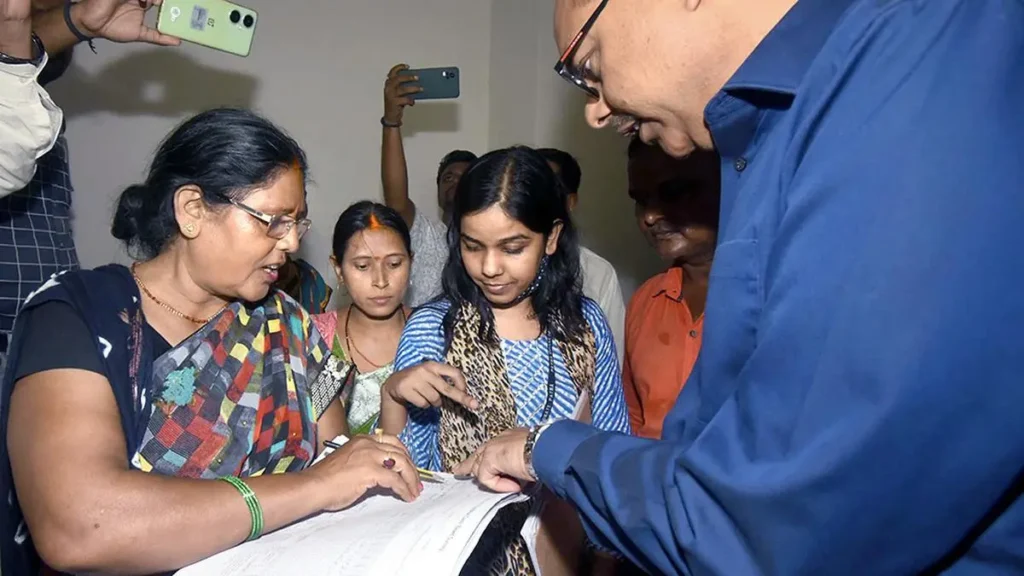The Centre’s sudden announcement on April 30 to conduct a caste census seems to have thrown poll-bound Bihar’s politics into turmoil. Coming just six months before the Assembly election, the move will force all parties to recalibrate their strategies. With this step, the BJP aims to blunt the caste advantage held by the Rashtriya Janata Dal (RJD)-led INDIA bloc, which had built momentum on the issue, banking on Rahul Gandhi’s consistent advocacy for caste enumeration and the backward-class credentials of the Lalu Prasad-Tejashwi Yadav duo.
The Mahagathbandhan (Grand Alliance) of the RJD, the Congress, and Left parties had made some inroads among non-Yadav OBCs, fielding Kushwaha candidates and aligning with Mukesh Sahani’s VIP, a party with influence among the Kevat-Mallah castes. Its alliance with the CPI(M-L) helped it reach Dalit voters in areas marked by a history of caste violence. Meanwhile, two prominent Dalit leaders—Chirag Paswan, son of the late Ram Vilas Paswan and leader of the Paswan-Dusadh community, and Jitan Ram Manjhi, the most recognisable figure from the Mushhar-Manjhi community—are allied with the BJP-Janata Dal (United) JD(U).
In the 2024 general election, the opposition campaigned on the slogan “Save the Constitution”, warning that the National Democratic Alliance (NDA), if it crossed 400 seats, would amend it to dismantle reservation.
Also Read | As Maharashtra waits to be counted, politics is already doing the math
While the BJP’s performance in Uttar Pradesh slumped under the weight of the PDA (Pichhda, Dalit, Alpsankhyak) campaign led by Akhilesh Yadav’s Samajwadi Party, it managed to contain the damage in Bihar.
Crucially for the BJP, its Bihar unit has long been supportive of the caste census. It had backed unanimous Bihar Assembly resolutions in February 2020 and 2021 for a nationwide caste census and joined an all-party delegation that met Prime Minister Modi on the issue in August 2021. Even when Nitish Kumar, then leading the Mahagathbandhan government, launched a caste survey in 2023, the State BJP did not oppose it. Now back in the NDA, Nitish remains a key backward-caste leader in the alliance—though questions persist about his health and political future.
Shortly after the Union Cabinet’s April 30 announcement, RJD chief Lalu Prasad issued a statement recalling that his party, then part of the United Front government, had pushed for caste enumeration in the 2001 Census. “We demanded it again in 2011. Mulayam Singh Yadav, Sharad Yadav, and I stalled Parliament until then Prime Minister Manmohan Singh agreed to a socio-economic survey,” he said.
Both the RJD and the JD(U) now claim credit for the 2023 Bihar caste survey. The RJD was part of the ruling Mahagathbandhan when it was conducted, and Nitish Kumar, as Chief Minister, oversaw it.
AICC in-charge for Bihar, Krishna Allavaru, credited Rahul Gandhi’s persistence for forcing the Modi government’s hand. He noted that Congress President Mallikarjun Kharge had written to the Prime Minister suggesting a model based on Congress-ruled Telangana. Allavaru also called for the removal of the Supreme Court-mandated 50 per cent cap on reservations.
The RJD’s posters across Bihar now speak of “taking reservation beyond 55 per cent”, accusing the Centre of stalling the MGB government’s attempt to raise it to 65 per cent.
In June last year, the Patna High Court struck down the State government’s move to increase OBC reservations based on the caste survey data. Days later, Nitish Kumar walked out of the Mahagathbandhan and rejoined the NDA. Since then, the RJD has repeatedly blamed the NDA for failing to expand the quota.
The caste census is expected to trigger fresh demands to expand the reservation pie. Anticipating this, the RJD has been raising the pitch and is likely to grow louder as the election approaches.
The Bihar caste survey was notified on June 6, 2022, completed by August 2023, and published in October. The socio-economic report was released on November 7, and a related Bill was tabled in the Assembly on November 9. A political realignment was already visible in the run-up to the 2024 general election, influenced by this data.
According to the Bihar caste survey, OBCs constitute 63.1 per cent of the population: 36 per cent EBCs, 14.3 per cent Yadavs, 3.5 per cent Kushwahas, and 2.9 per cent Kurmis. Among the 14.6 per cent Scheduled Castes, Ravidas (Mochi) and Paswan (Dusadh) each account for 5.3 per cent.
Yadavs remain the RJD’s core base, while Kurmis back Nitish Kumar. Kushwahas, once aligned with Nitish, are now being actively courted by the RJD. Among Dalits, the Ravidas/Mochi (known as Jatav in U.P.), despite their numbers, have lagged in political representation.
Following the Centre’s announcement, Bihar leaders rushed to claim credit. BJP State president Dilip Jaiswal praised the Modi government, stating, “Now the country can frame policies for the deprived and exploited based on accurate statistics.” Though he acknowledged that it’s easier said than done.
Political representation is likely to become a contentious issue in Bihar, where constituencies have been traditionally identified by caste—Madhepura as “Gope ka” (belonging to Yadavs), and Aurangabad as the “Chittorgarh of Bihar” (a Rajput stronghold).
Also Read | Caste census: A surgical strike on India
As the caste census produces hard numbers, demands for proportionate political representation will rise. This could disrupt existing social coalitions and lead to a tectonic shift in Bihar’s politics, where people often vote their caste more than cast their vote.
Nowhere is this more fraught than in a State where caste wars have been fought over land ownership. Barring the Yadavs, most OBC and Dalit communities own little to no land, which remains largely with the privileged castes. The devil, as always, lies in the details—and these details could upend deeply entrenched caste hierarchies.
Bihar, clearly, will be the testing ground for both the caste census and the political challenges it unleashes.
Source:https://frontline.thehindu.com/politics/bihar-caste-census-2025-election-impact-rjd-bjp-strategy/article69561171.ece

